A company commander’s best tool for surviving the crucible of a combat training center may be a shovel.
Commanders headed for their time “in the box” at any of the major training centers across the Army — from the National Training Center at Fort Irwin, California, to the Joint Multinational Readiness Center in Germany to the Joint Readiness Training Center in Fort Johnson, Louisiana — will need to do a lot of home station preparation and get their soldiers digging.
That’s one of a slew of tips that some current observer controllers/trainers at the centers shared at the recent Maneuver Warfighter Conference on Fort Moore, Georgia, during a session aimed at company commanders heading to the centers. Capt. Joseph White and 1st Sgt. Brandon Robinson, both cadre with the Joint Multinational Readiness Center, said the most significant struggle at their location isn’t related to technology but rather discipline and standards.
“Are your soldiers doing the right thing when you’re not there?” White said.
That means putting out security at every halt, digging proper fighting positions, building range cards or putting up camouflage netting every time a vehicle parks.
Maj. Thomas Green and 1st Sgt. Jose Rodriguez, Joint Readiness Training Center cadre, told attendees that while they’ll be on the move much more than in past rotations or overseas deployments, planning for simple things makes a huge difference.
“Have a plan to store, transport, issue and recover equipment, charge batteries, and evacuate personnel,” Green shared during a presentation.
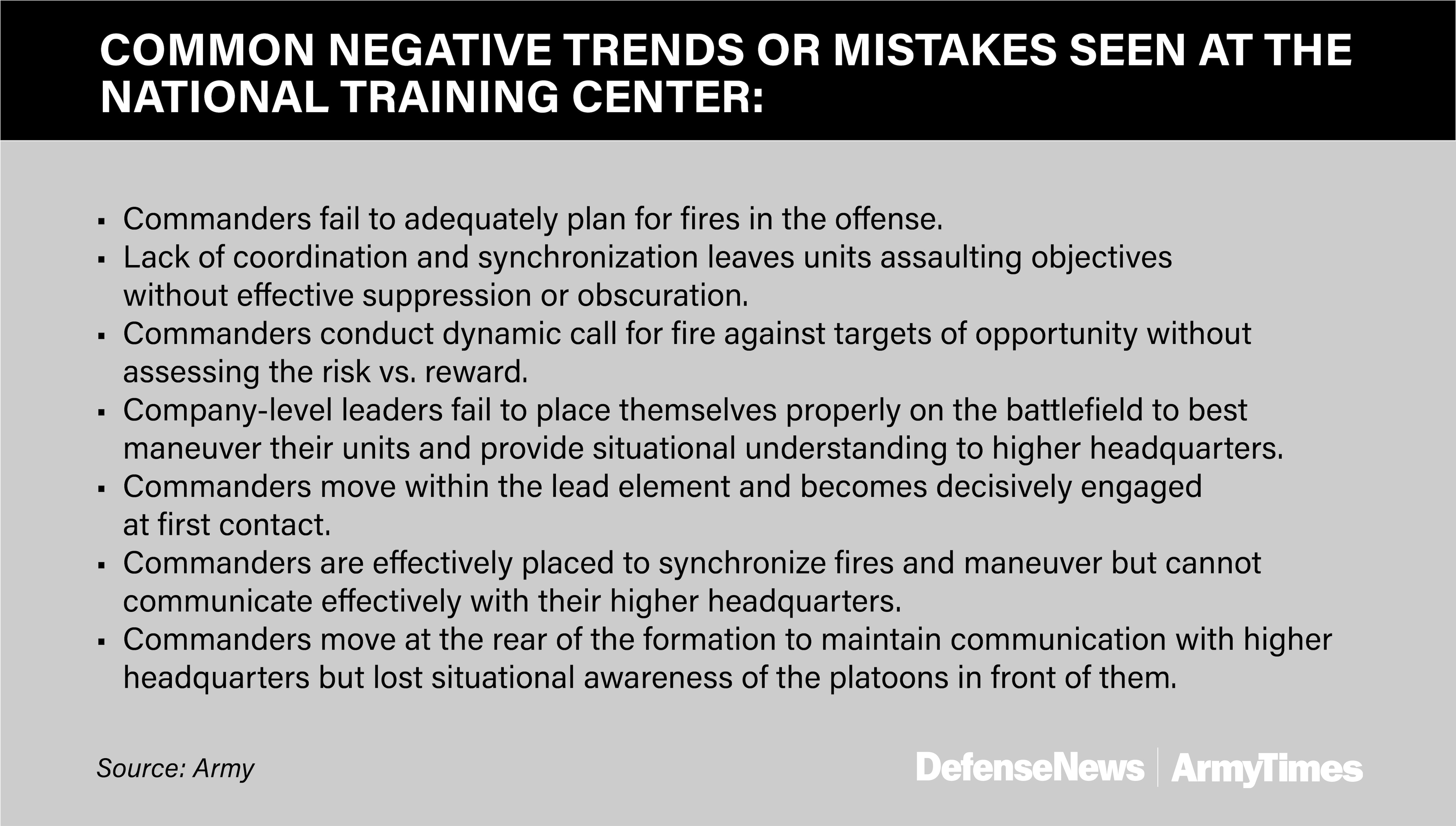
But high-tech thinking is also valuable. The opposition force at these centers has its own drones and ways to find communication devices. The Army’s Cyber School commandant, Brig. Gen. Brian Vile, said in a separate panel that his electronic warfare soldiers can identify printers, improperly grounded generators and cellphones, then target those signals near instantaneously.
In one snapshot of an area at the the National Training Center, cadre showed the activity of 729 wireless devices, 617 of which were mobile phone devices categorized by cell service carrier.

Capt. Aaron Waller, National Training Center cadre, said a concerning excuse he hears from commanders is that they “don’t have time to plan” their movements, so they resort to “movement to contact” — basically pushing out soldiers until they make contact with the enemy as a crude sort of reconnaissance.
“Movement to contact is a last resort,” Waller said. “It’s what we do after we’ve exhausted every other means.”
To combine age-old tactics with newer tech, Waller and other trainers advised to use drones early and often. “Proper employment of [small unmanned aerial systems] can place you at an advantage over the enemy,” Waller said.
Beyond a hasty recon, drone use also helps captains and other junior commanders answer priority intelligence requirements from their headquarters, he added.

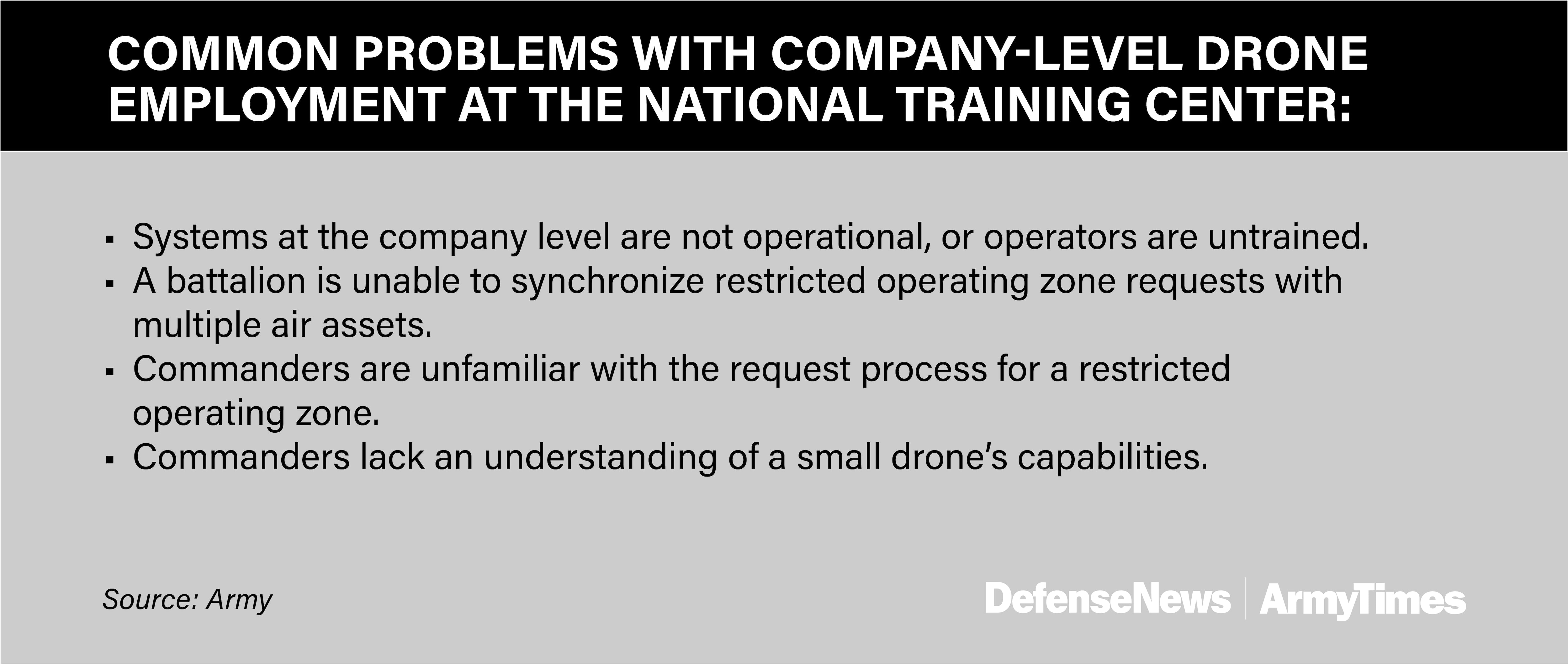
But drone use doesn’t happen on the fly. Waller and others exhorted commanders to incorporate the devices into home station training so soldiers are prepared when they arrive at the training center. The same goes for maintenance practices, logistics loading, and tactical and administrative movements.
But that’s not the entire story because training at the centers has become more rigorous. Administrative movements — rolling a convoy of vehicles from one training spot to the next, much like a unit would do on civilian roads near their home station — doesn’t happen anymore at the centers. Admin moves are now tactical. Commanders who don’t put out security and plan their convoy operations will suffer the consequences — a strike from the opposition force.
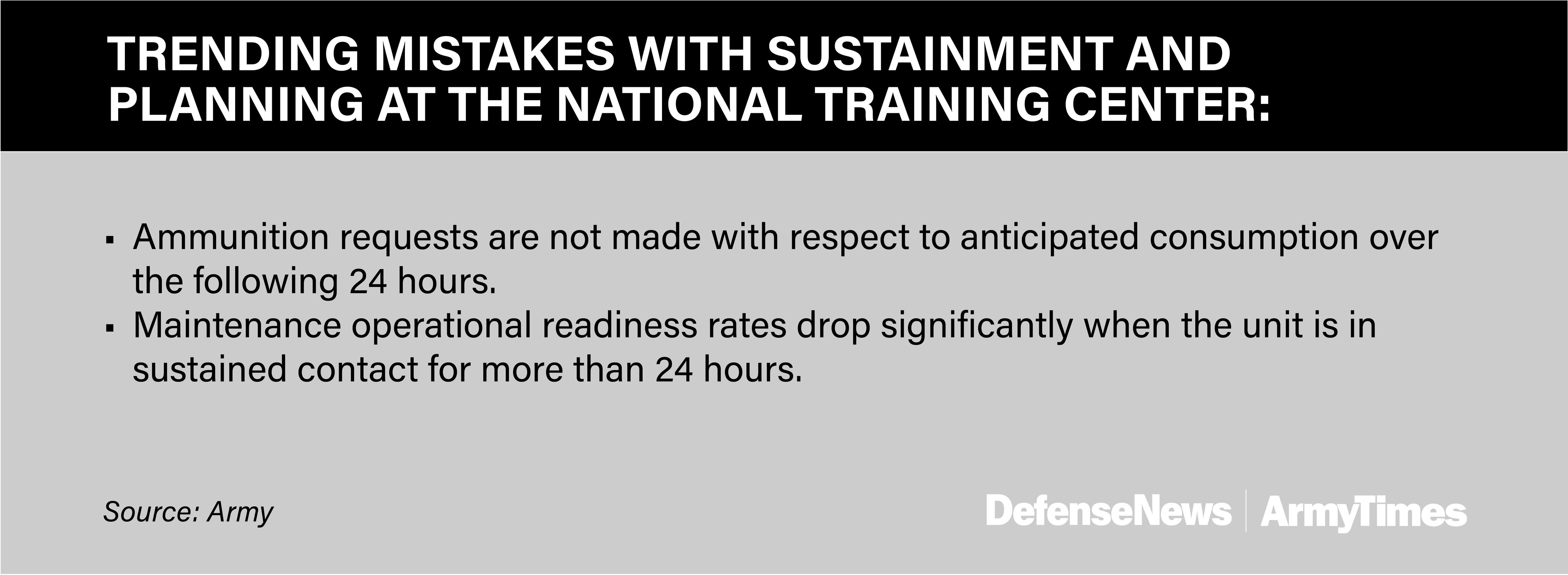
Meanwhile, commanders are getting dinged for ineffectively planning their fires missions. Waller and other cadre admonished commanders to coordinate with their intelligence cells and tie every sensor in their inventory to a shooter.
Deliberate fires planning, especially ahead of the rotation, will save rounds downrange, the argument goes.
Waller said commanders must practice organic fires missions ahead of their arrival at a training center, especially with mortars and drones. Those are often the quickest and cheapest ways to react to contact or to conduct a hasty fire mission.
The bigger-ticket items, such as Javelin missiles, should be spared for higher-value targets and distributed with a plan in mind, Waller said. “It’s a deliberate synchronization of your assets when you need it.”
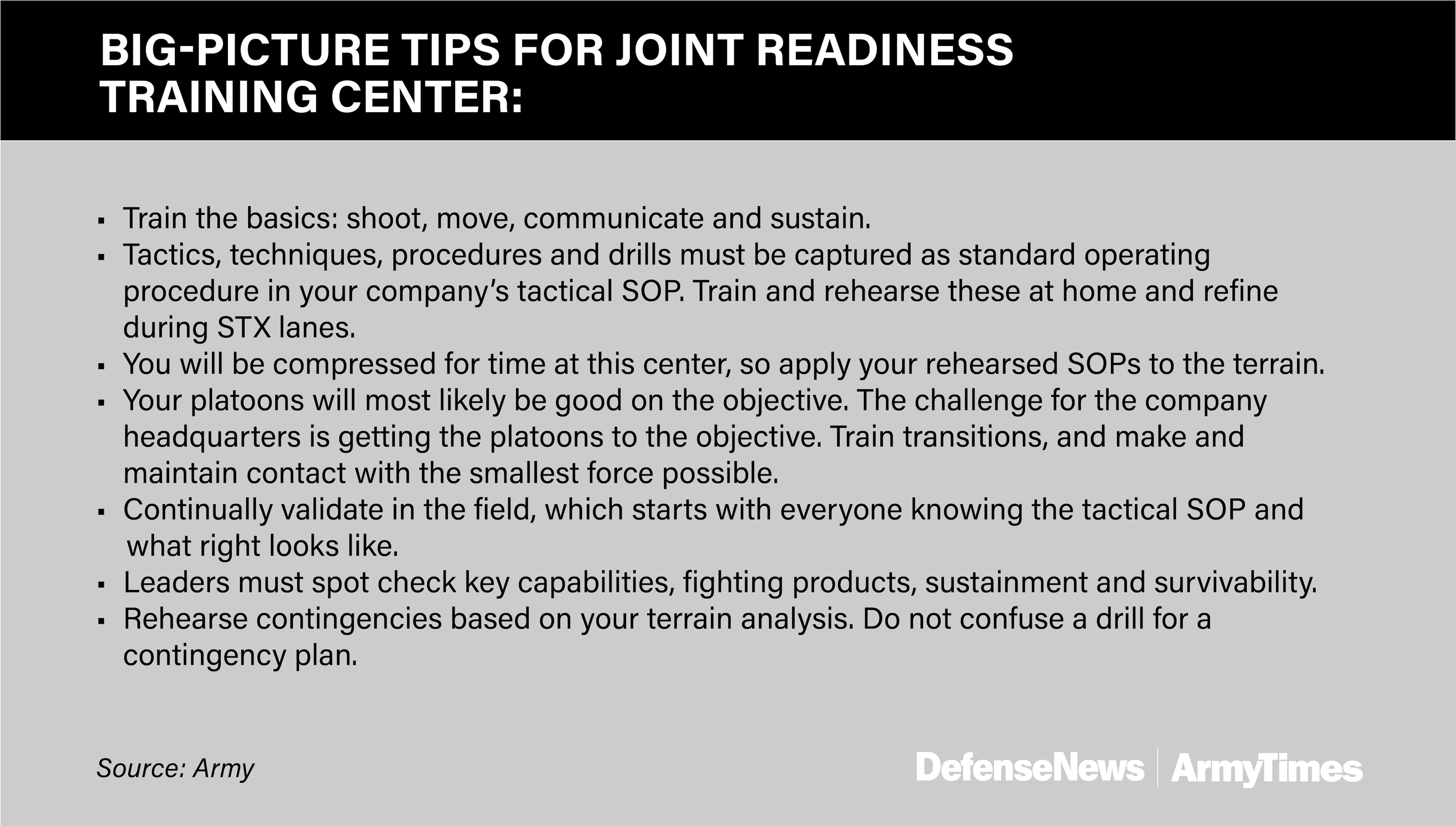
Otherwise, as Waller has seen, a unit will fire most if not all its rockets from one shooter, and then end up empty when the counterattack arrives.
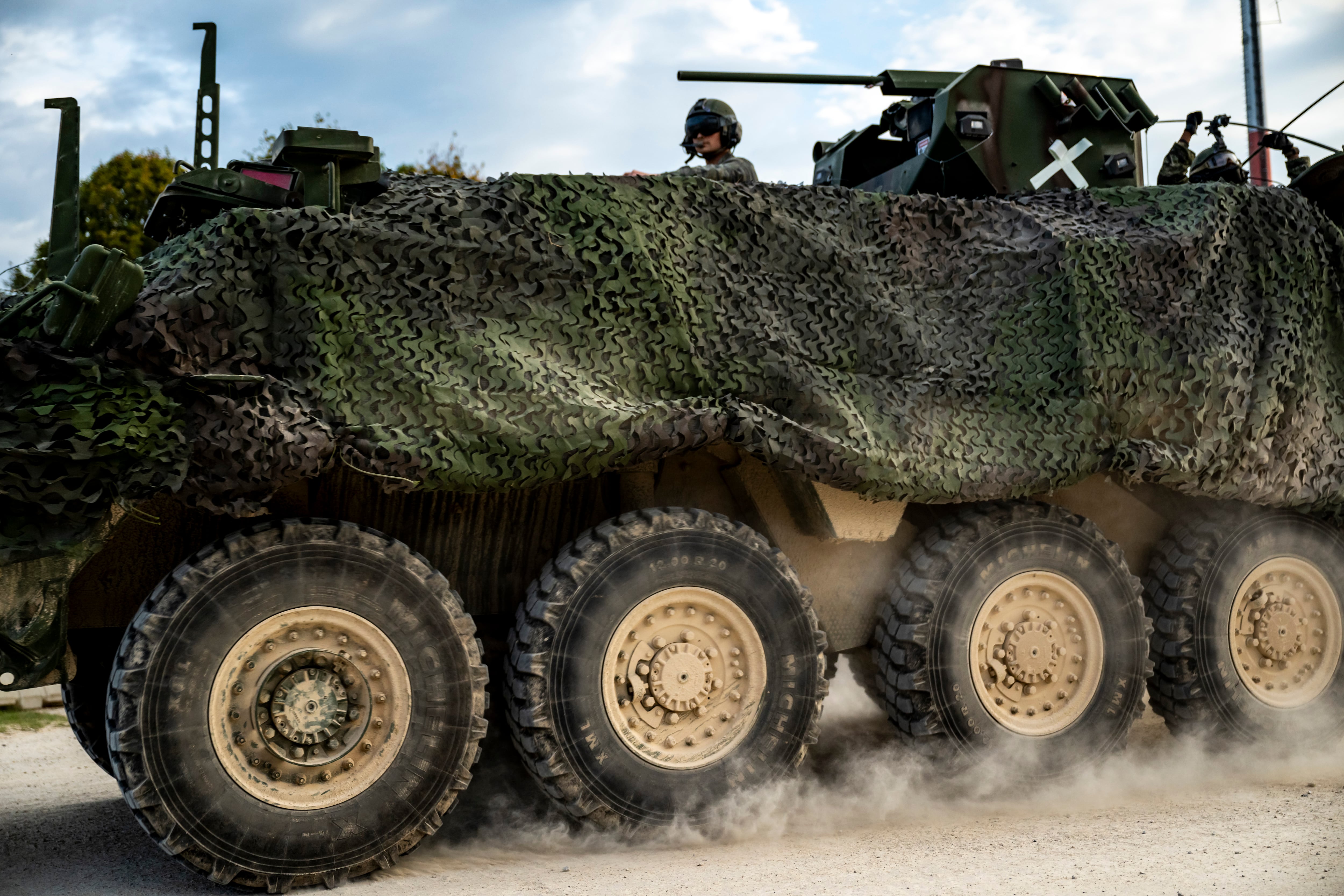
And perhaps the least alluring, but possibly the most important, is maintenance.
Waller said the most successful commanders at the National Training Center spend a lot of time with their vehicles and know what’s available.
“The best predictor of what maintenance is going to look like on Training Day 10 is how maintenance looks on Day 1,” Waller said.
Todd South has written about crime, courts, government and the military for multiple publications since 2004 and was named a 2014 Pulitzer finalist for a co-written project on witness intimidation. Todd is a Marine veteran of the Iraq War.




